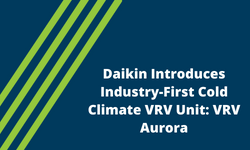A common question regarding VRF in cold climate relates to heating: Can we design VRF with no back-up heating in New England? What technology do VRF condensing units have to ensure stable and efficient operation during cold weather?
 Most manufacturers now have units with operational data down to -13°F. However, only a few manufacturers have developed what the industry refers to as cold climate units, designed specifically for buildings with VRF as the sole source of heat in colder regions. These units usually feature even lower operating ranges, larger coil surface areas, vapor injection technologies, and extra precautions to prevent ice build-up at the bottom of the condenser coils. As a result, cold climate units usually do not display de-rates in heating capacities at 5°F or even 0°F, which are typical design temperatures for the New England region.
Most manufacturers now have units with operational data down to -13°F. However, only a few manufacturers have developed what the industry refers to as cold climate units, designed specifically for buildings with VRF as the sole source of heat in colder regions. These units usually feature even lower operating ranges, larger coil surface areas, vapor injection technologies, and extra precautions to prevent ice build-up at the bottom of the condenser coils. As a result, cold climate units usually do not display de-rates in heating capacities at 5°F or even 0°F, which are typical design temperatures for the New England region.
Even though most standard VRF units claim operation down to -13°F, cold climate units are recommended in the New England area in applications where VRF will be the sole source of heat for the building. Daikin’s VRV Aurora cold climate unit was released in Canada last year, and is now also available in the US.
The Aurora is the industry’s first VRF unit able to operate down to -22°F. The condensing units employ Daikin’s unique Variable Refrigerant Temperature (VRT) technology resulting in industry leading energy efficiency, and includes a hot gas base pan refrigerant circuit in both heat pump and heat recovery models.
To learn more about this specialized equipment and how cold climate VRF units can benefit your next project, contact DXS today, or watch the VRV Aurora product video from Daikin.

